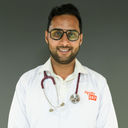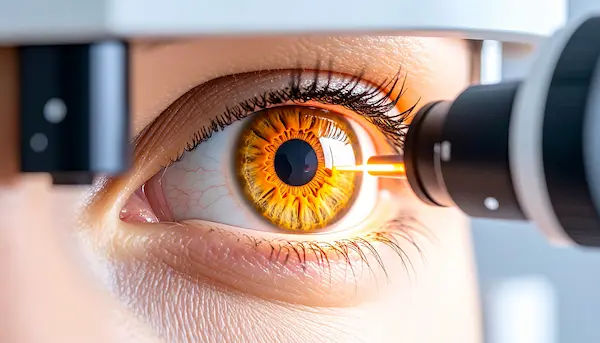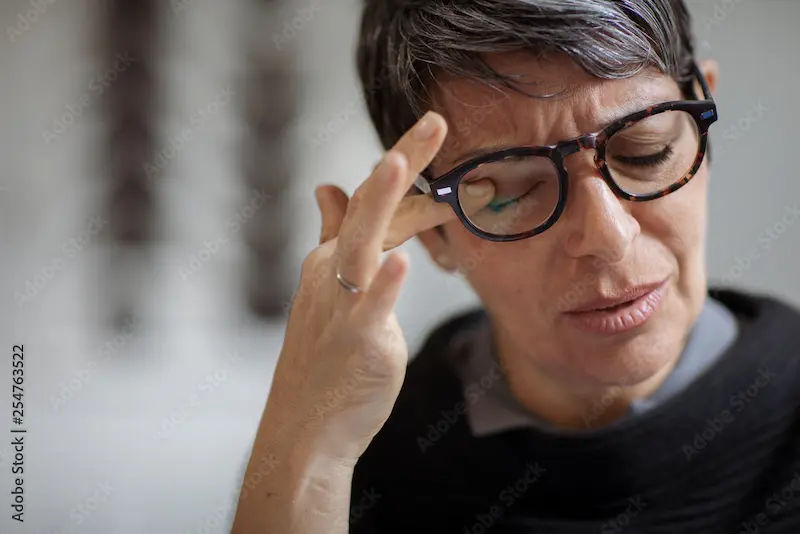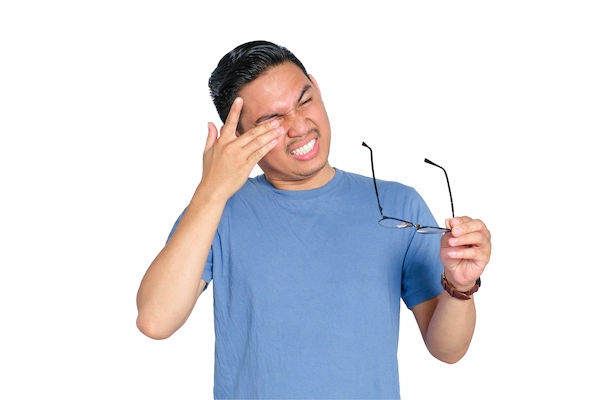Your Child's Vision: A Parent's Guide to Lifelong Healthy Eyes
Know about the child's vision, why it is important, common vision problems, recognising early signs and more.


Introduction
As a parent, you want to give your child the best start in life. From nutritious meals to a safe home, you cover all the bases. But one critical area that can sometimes be overlooked is your child's eye health. Healthy eyes are the window to learning, exploration, and development. Unlike a fever or a cough, vision problems in children can be subtle and easily missed. This comprehensive guide will walk you through everything you need to know, from nutrition and protection to recognising warning signs, to ensure your child's vision is clear and healthy for years to come.
Why Your Child's Eye Health is Crucial for Development
A child’s ability to see clearly is fundamentally linked to their overall growth. In the first 12 years of life, their visual system is rapidly developing, and any interruption can have long-lasting effects.
Consult a Top General Practitioner for Personalised Advice
The Link Between Vision and Learning
It’s estimated that 80% of learning is visual. From recognising letters and numbers on a page to reading the whiteboard from the back of the classroom, a child with an uncorrected vision problem may struggle academically. They might be mislabeled as having a learning disability or an attention disorder when the root cause is simply that they cannot see properly. Ensuring healthy eyes is a direct investment in their educational success.
How Good Eyesight Supports Social and Motor Skills
Vision isn't just for school. It’s crucial for social interactions, like interpreting facial expressions and making eye contact. It also plays a vital role in motor skill development. Catching a ball, learning to ride a bike, and even navigating a playground safely all depend on strong depth perception, eye-hand coordination, and visual tracking—skills that are compromised if their vision is blurry or misaligned.
Essential Eye Care Habits to Start Today
Building healthy habits early sets the stage for a lifetime of good vision. Here are the key areas to focus on.
Nutrition for Healthy Eyes: Building a Vision-Friendly Plate
You truly are what you eat, and this is especially true for your child's eyes. Key nutrients support the retina, protect against light damage, and promote healthy blood vessels in the eyes.
Superfoods for Super Sight: What to Include
Vitamin A & Beta-Carotene: Essential for low-light vision. Find it in carrots, sweet potatoes, spinach, and mangoes.
Lutein and Zeaxanthin: These antioxidants act like "internal sunglasses," protecting the eyes from harmful blue light. Offer eggs, corn, and leafy greens like kale.
Omega-3 Fatty Acids: Crucial for visual development and retinal function. Fatty fish like salmon and tuna are excellent sources, as are flaxseeds and walnuts.
Vitamin C: Supports the health of blood vessels in the eyes. Citrus fruits, strawberries, and bell peppers are packed with it.
Protecting Young Eyes from Harmful UV Rays
Children's eyes have clearer lenses, allowing more UV radiation to penetrate than adult eyes, which increases their risk of future damage like cataracts. Always have your child wear sunglasses that block 100% of UVA and UVB rays when outdoors, even on cloudy days. A wide-brimmed hat offers additional protection.
Managing Screen Time to Prevent Digital Eye Strain
With online learning and digital entertainment, screen time is a reality. To combat digital eye strain in kids, enforce the 20-20-20 rule: every 20 minutes, look at something 20 feet away for at least 20 seconds. Ensure the room is well-lit to reduce glare and encourage them to blink fully to avoid dry eyes.
Recognising the Signs of Vision Problems in Children
Children often don't complain about vision issues because they think how they see is normal. Parents and teachers need to be detectives.
Behavioural Red Flags You Shouldn't Ignore
Sitting too close to the TV or holding books/tablets very close to their face.
Squinting, tilting the head, or closing one eye to see better.
Frequent eye rubbing, headaches, or complaints of tired eyes.
Losing their place while reading or using a finger to guide their eyes.
Avoiding activities that require near vision (like colouring) or distance vision (like sports).
Physical Symptoms That Warrant a Doctor's Visit
Eyes that look crossed or misaligned (strabismus).
Persistent watery eyes or chronic redness.
A white pupil instead of a black one in photographs (this requires immediate medical attention).
Sensitivity to light.
If you notice any of these signs of vision problems in toddlers or older children persisting, it's crucial to consult a professional. You can easily book an online consultation with a pediatric specialist on Apollo24|7 to discuss your concerns and determine the best next steps.
The Pediatric Eye Exam Schedule: When to Get Checkups
Even without obvious symptoms, regular checkups are vital. Here’s the recommended schedule from the American Optometric Association.
The Newborn and Infant Stage (0-24 months)
Paediatricians should perform a basic red reflex test (like a flash photograph) at birth and check for basic eye health at all well-baby visits. A comprehensive exam between 6-12 months is recommended to check for healthy eye alignment and development.
The Preschool Years (2-5 years)
A thorough eye exam between the ages of 3 and 5 is essential to check for amblyopia (lazy eye), strabismus, and other issues that could affect school readiness. This is a critical window for treatment.
The School-Age Years (6+ years)
Before first grade, and then every two years if no vision correction is needed, a child should have an exam. If they require glasses or contacts, annual exams are a must. Apollo24|7 offers convenient home collection for tests that might be recommended alongside an eye exam, such as checking for vitamin deficiencies that can impact vision.
Common Childhood Vision Issues
Understanding these conditions can help you be proactive.
Myopia (Nearsightedness) and Its Growing Prevalence
Myopia, where distance vision is blurry, is becoming increasingly common in children, linked in part to increased "near work" (screens, books) and less time outdoors. Spending at least 1-2 hours outside daily has been shown to help reduce the risk of developing myopia.
Amblyopia (Lazy Eye): The Critical Treatment Window
Amblyopia occurs when one eye is weaker, and the brain starts to ignore its signals. It must be treated with patches, glasses, or drops during early childhood (ideally before age 7-9) while the visual system is still plastic. After this window, the vision loss can become permanent.
Strabismus (Crossed Eyes)
This misalignment of the eyes can be constant or intermittent. It requires prompt evaluation, as it can cause double vision and lead to amblyopia. Treatment may include glasses, vision therapy, or, in some cases, surgery.
Conclusion
Your child's vision is a precious gift. By incorporating these simple yet powerful habits—nutritious eating, sun protection, smart screen use, and vigilant observation—you lay a strong foundation for their visual health. Remember, you are not alone in this. Partnering with healthcare professionals for regular, comprehensive eye exams is the most important step you can take to catch any issues early when they are most treatable. Being proactive today ensures that your child can see the world in all its vibrant detail, unlocking their full potential for learning, play, and a bright future.
Consult a Top General Practitioner for Personalised Advice
Consult a Top General Practitioner for Personalised Advice

Dr. Anand Ravi
General Physician
2 Years • MBBS
Bengaluru
PRESTIGE SHANTHINIKETAN - SOCIETY CLINIC, Bengaluru

Dr Syed Mateen Pasha
General Physician
2 Years • MBBS
Bengaluru
PRESTIGE SHANTHINIKETAN - SOCIETY CLINIC, Bengaluru

Dr. Syed Ismail Ali
General Practitioner
7 Years • MBBS
Hyderabad
Apollo 24|7 Clinic, Hyderabad

Dr. Johnson. S
General Practitioner
7 Years • MBBS MD(Preventive and social Medicine)
Pune
Apollo Clinic, Nigdi, Pune

Dr. Madhuri Sai Sreepada
General Practitioner
9 Years • MBBS
Hyderabad
BRIGHT SMILES MEDICARE & DENTAL CARE, Hyderabad
More articles from Eye Problem
Frequently Asked Questions
1. At what age can my baby see clearly?
Newborns have blurry vision but can see faces at close range. By 3-4 months, color vision and tracking improve significantly. Depth perception develops around 5 months, and by 12 months, a child's vision is nearly as sharp as an adult's, though the visual system continues to refine until around age 10.
2. Are too much screen time effects on eyes permanent?
The digital eye strain caused by screens is typically temporary, causing symptoms like dryness, headaches, and blurry vision. However, excessive near work is a risk factor for the development and progression of myopia in children, which is a permanent condition. Balancing screen time with outdoor play is crucial.
3. How can I tell if my toddler needs glasses?
Look for behavioral clues: squinting, tilting their head, sitting very close to the TV, rubbing their eyes frequently, showing a lack of interest in looking at picture books, or being unusually clumsy. A comprehensive eye exam is the only way to know for sure.
4. Is it safe for children to wear contact lenses?
This depends on the child's maturity and motivation. Contacts can be a good option for older children and teens, especially for sports. However, they require strict hygiene to prevent infections. Discuss the pros and cons with your eye doctor.
5. What is the difference between a vision screening and a comprehensive eye exam?
A school vision screening is a basic test that can identify some children with vision problems, but it can miss many issues. A comprehensive eye exam by an optometrist or ophthalmologist involves dilating the pupils to fully assess eye health, check for prescription needs, and diagnose conditions like amblyopia that screenings often miss.




